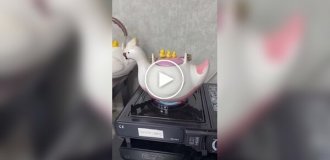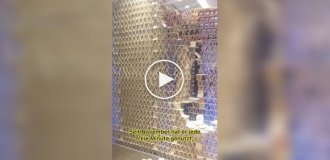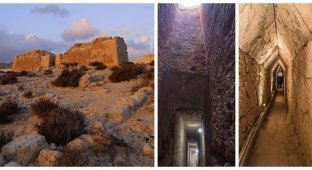Mexicans found strange Aztec treasures (13 photos + 1 video)
Treasury with ritual offerings discovered in Mexico City Aztecs. Among them are a box of starfish, a jaguar dressed as a warrior, and sacrificial eagles. Archaeologists believe that the find could lead to a long lost imperial tomb. 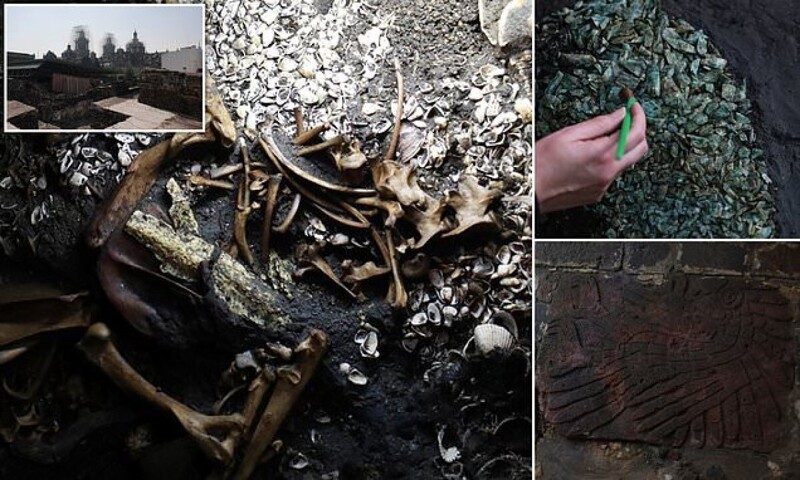
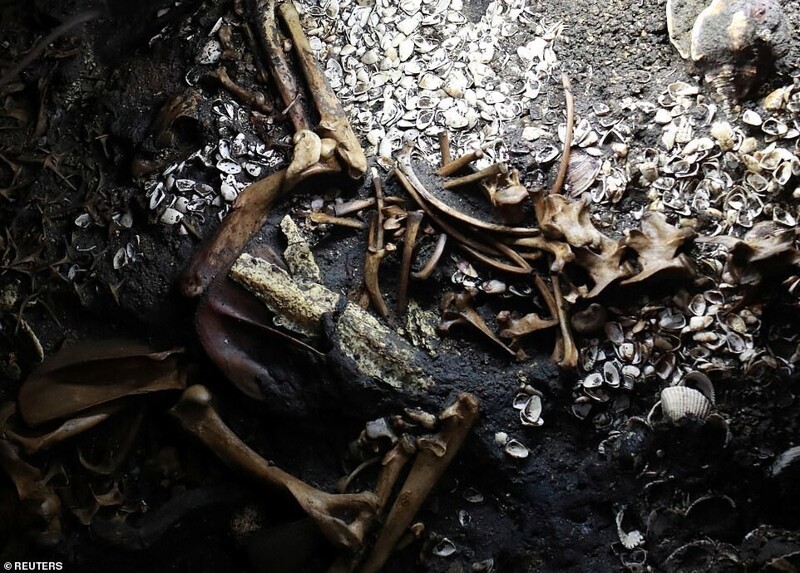
Many Aztec treasures have been discovered by archaeologists near steps of a temple in Mexico City. According to archaeologists, they were hidden priests over 520 years ago. Stash includes brought in the sacrifice of a jaguar dressed as a warrior clutching a sacrificed eagle, and also hundreds of starfish and coral branches. All this was sealed in stone boxes. Experts believe that the artifacts were brought as offerings to Emperor Ahuizotl, who ruled from 1486 to 1502. 
Noticing a mysterious bulge in the middle of one of the boxes, scientists have suggested that under it is something solid that can be the cremated remains of the emperor. "We are expecting a great discovery,” said lead archaeologist Dr. Leonardo López Luján. 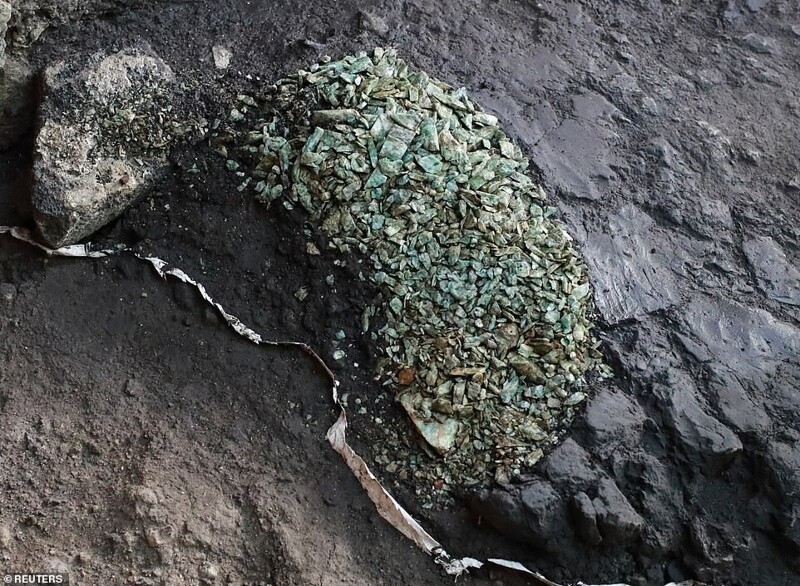
The find was made in what is today known as the Templo Mayor, - the main temple of the native Aztecs in their capital, Tenochtitlan. 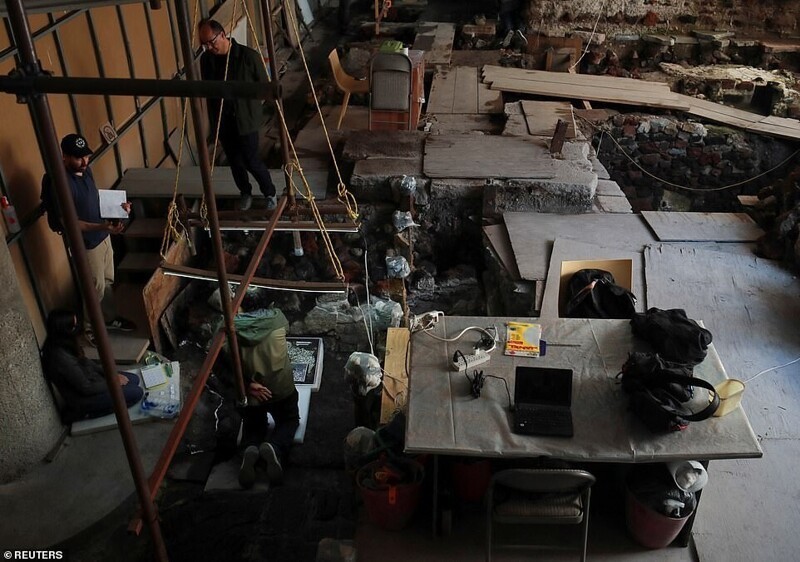
The exact date of the founding of Tenochtitlan by the Aztecs or Mexico is unknown, but it is believed to have been around 1325 AD and the Templo Mayor was built around the same time. The temple was rebuilt six times to mark the reign of various Aztec emperors, but always had two aisles, which remained dedicated to two gods - Tlaloc, the god of rain, and Huitzilopochtli, god of war. 
The main temple rose to the height of a modern 15-story building. He was destroyed after the Spanish conquest of Mexico in 1521. Spaniards used stone to build a catholic cathedral cathedral. 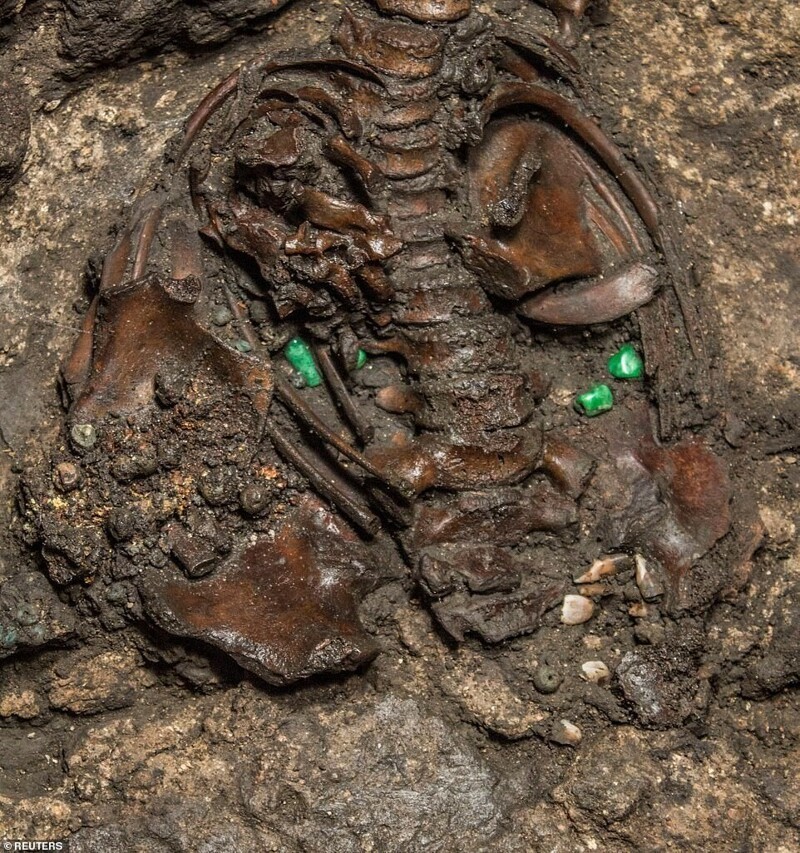
A few decades after the conquest, the chroniclers described in detail burial rites of three Aztec kings, brothers who ruled from 1469 to 1502. According to these reports, the cremated remains of the rulers were placed in storage with sumptuous offerings and hearts sacrificed slaves on or near the round platform. 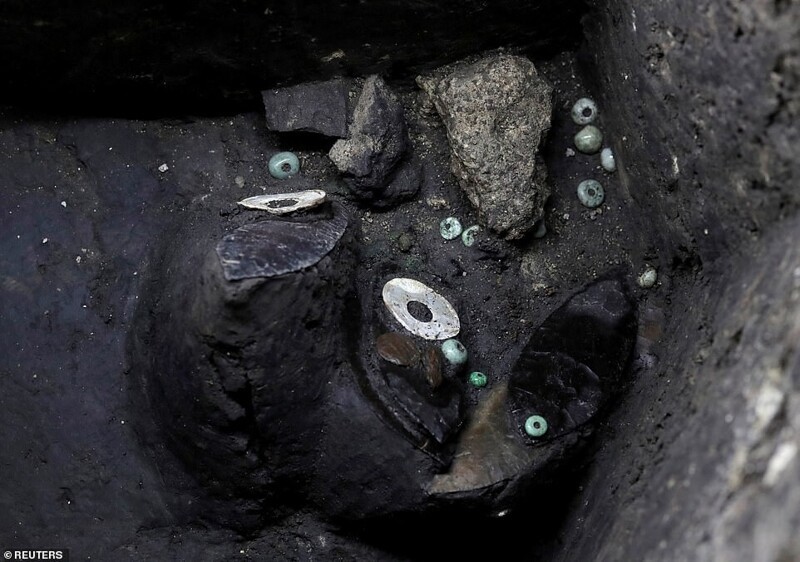
The rubble left from the destruction of the temple hides much of it. remains, but archaeologists have found more than 200 donation boxes with since excavations began here in the first half of the 20th century. Despite to the best of our ability, however, not a single royal tomb of the Aztecs has ever been has been found, making the potential discovery of the Ahuizotl urn "extremely important," said Dr. Lopez Luján. This emperor known for the wars that expanded his empire into a modern Guatemala, connecting the coast of Mexico in the Pacific Ocean and the Mexican bay. He celebrated his victories with bloody mass sacrifices. 
Dr. López Luján's team began excavating a round ritual platforms right at the steps of the Templo Mayor more than two years ago, but soon they had to suspend work due to the COVID-19 pandemic. However, his the team managed to carefully sort through about a tenth of the content boxes. They found an ornate jaguar, dressed like a warrior, with a spear, brass bells tied to ankles and carved wooden disc on the back, decorated with the emblem of the Aztec patron deity Huitzilopochtli. Also there were 165 once bright red starfish and 180 branches of coral that have been harvested from both the Pacific and the coast of the Gulf of Mexico. 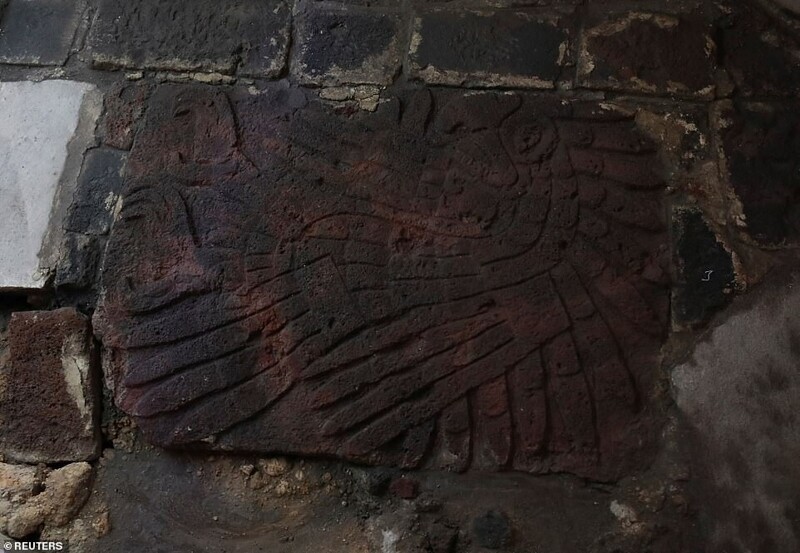
Sea offerings covering the jaguar may represent the water world, where, as the Aztecs believed, the sun sets every night, and where, according to them believed to have been part of the king's journey after death.
In one of the boxes was also found a pink spoonbill, a bird from flamingo family, which was believed to personify the souls of the Aztecs as they descend into the underworld. 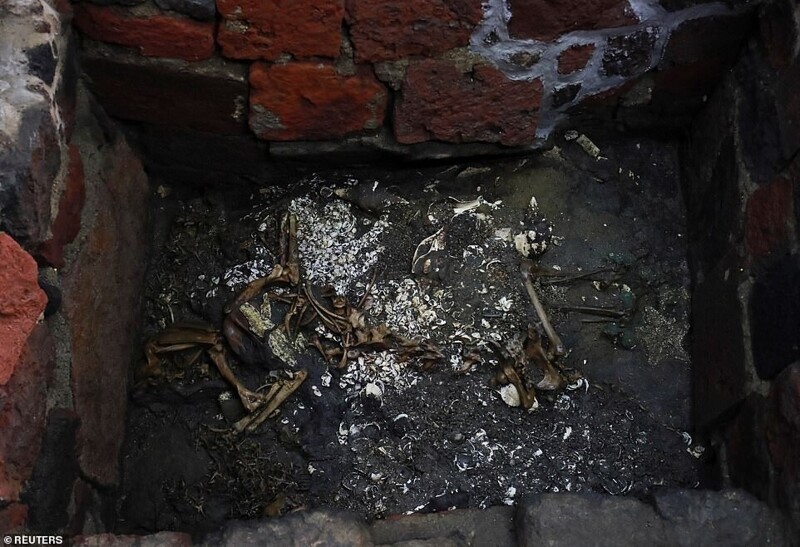
Smaller stone boxes were located next to the jaguar. AT one of them, the top one consisted of Aztec incense in bars incense. Another contained 21 flint knives, decorated with the image warriors made of mother-of-pearl, as well as a miniature wooden spear thrower and shield. 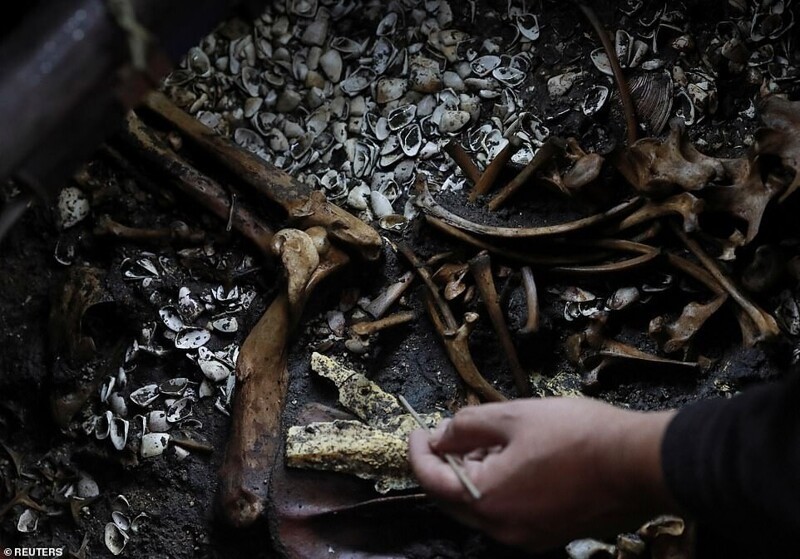
Finally, in a nearby round offering, a sacrificed boy about 9 years old with a wooden disk of the god of war, a necklace made of jade beads and wings made from hawk bones and attached to his shoulders. Scientists believe that both the jaguar and the boy hearts were torn out during a ritual sacrifice. 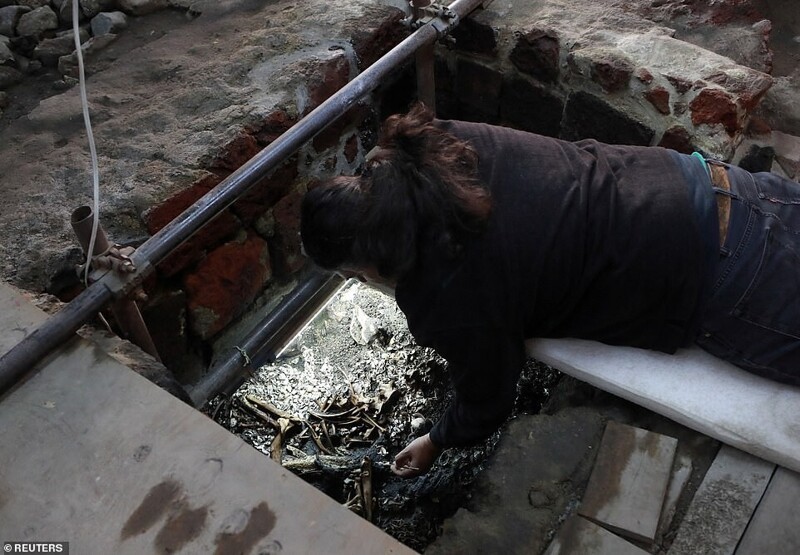
After the excavation work resumed after the completion of pandemic, the team of Dr. López Luján announced further discoveries, including the fact that a jaguar held a sacrificed eagle in its paws. They also found two additional chests adjacent to the central offering with a jaguar. Both should be open in the coming several weeks and probably contain more ferocious animals dressed like warriors. Finally, the skulls of ten sacrificed children between the ages of one and six. What regarding the search for the urn containing the cremated remains of Ahuizotl, Dr. Lopez Luhan says at least another year of excavation is required.
Joyce Marcus, an archaeologist at the University of Michigan, says that the offerings shed light on "the Aztec worldview, rituals, economy and connections between imperial expansion, wars, military prowess and the role of the ruler" in the conquests and related ceremonies. "Each the donation box adds another piece to the puzzle.” she said.
